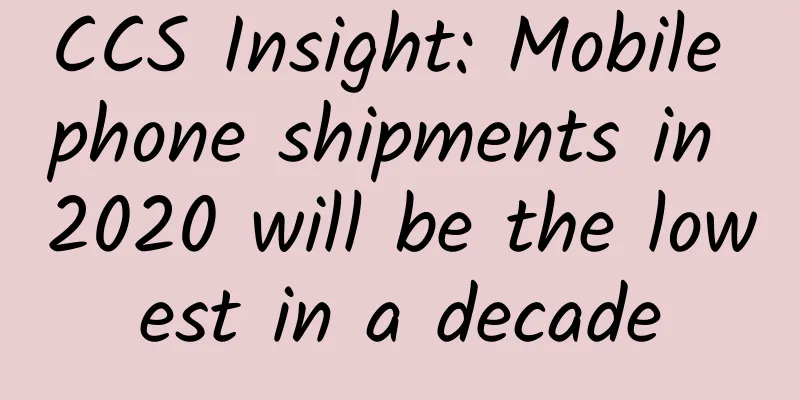5G is not here yet, but WeChat is already struggling

|
Recently, at a roundtable forum hosted by Si Xiao, director of Tencent Research Institute, Zeng Qinghong, Party Secretary and Chairman of Guangzhou Automobile Industry Group Co., Ltd., asked why Tencent has not launched in-car WeChat. After all, WeChat has been integrated into everyone's life, such as payment, WeChat calls, WeChat voice, location sharing and other functions, which make everyone feel that WeChat is very useful. Zeng Qinghong believes that this issue is not only of concern to car companies, but also to many WeChat users. Later, Ma Huateng explained, "Why doesn't WeChat provide a car version?" Zhang Xiaolong's team thought of an essential question: should users use WeChat while driving? According to Ma Huateng, WeChat has always been worried that users will use it too much and affect safety, so it has not embedded the WeChat solution into the Internet of Vehicles system. However, Ma Huateng revealed that the WeChat team is considering providing a pure voice interaction interface, "If it can be done, it will be officially provided to everyone." The concerns of Ma Huateng and the WeChat team are not without reason. The most important thing when driving is safety. When driving, your hands cannot do other tasks, and your eyes should be focused. The "eye-hand combination" is the key interactive method of today's smartphones. WeChat is also inseparable from such usage scenarios. Playing WeChat in the car is not allowed by traffic regulations, and car companies dare not take the risk. Although voice recognition technology has made great progress, as far as the Chinese language is concerned, it is still impossible to achieve the state of free conversation on WeChat without hand-eye coordination in the short term. The launch of the WeChat car version requires a lot of experiments and the modification and adaptation of traffic laws and regulations. The difficulty can be imagined. We can also see that the dialogue between car manufacturers and Internet giants on the use of WeChat in the car environment also shows the embarrassment faced by WeChat. In the 5 era we are about to enter, most scenarios are no longer what WeChat is good at, and society is about to usher in a new round of social software changes and upgrades. Among the three recognized 5G scenarios, WeChat is struggling to meet the needs of the Internet of Things based on wide coverage, smart driving cars based on low latency, and video streaming services based on high bandwidth. In the IoT, what is needed is network support with equal resources for both upstream and downstream, but continuity is not required. In many cases, transmission may only require a few B or KB. Point-to-point connections between objects require high stability, which is inherently opposed to going through too many processes. In this regard, high-stability direct network service solutions from telecom operators will be more practical, while the entire process of identification, transmission and response will mainly rely on IoT chip vendors, IT system integrators and telecom operators. There is no need for human-to-human applications such as WeChat. Tencent has proposed a grand strategy of "connecting everything", but it lacks the core capabilities to implement it. Almost all aspects require support and cooperation from all sides. This will inevitably be replaced by OTT in the era of the Internet of Things. Manufacturers with various resources and capabilities will form a strong complementary alliance. Although 5G has not yet been launched, some IoT applications have become popular, the most typical of which is the smart lock for shared bikes. Although Tencent has invested in Mobike, it can only provide a function to unlock the bikes by scanning the QR code with WeChat, and the unlocking technology for shared bikes is only implemented by telecom operators, equipment vendors and lock manufacturers. We have also seen that even with the support of WeChat, Mobike still failed. This is actually the first case of WeChat being marginalized in the IoT era. In the video field, Tencent is definitely very powerful. Tencent Video ranks first in the Chinese video camp, but WeChat is not. There are no long videos on WeChat. It is said that this is to take care of the customer experience and is called "restraint." However, short videos are also limited to a few attempts. They are very cautious about extending the length of videos from 6 seconds to 10. On the one hand, they are afraid that WeChat users will flee due to the piles of spam, and on the other hand, they may be afraid that the server will not be able to support it. In terms of short videos, Tencent had to revive Weishi when Weishi was delisted, and later when its supported Kuaishou, Huya, etc. were left far behind by Douyin, Huoshan and Xigua, it used various means to "be strict with others and lenient with oneself", and used every possible means to ban and suppress, and its purpose was still to compete for the short video position. Many people say that as long as Tencent adds short videos to WeChat and the Moments are open to short videos, Douyin and other apps will be defeated instantly. These may be beautiful fantasies, but they are not practical for WeChat. If WeChat can do this, why wait until now? WeChat’s architecture is not sufficient to support the short video industry, nor is it sufficient to support high-traffic video streaming services. In a word, WeChat was not created for high-traffic applications such as video streaming, and it is outdated. Back to the beginning, cars are likely to be the third 5G scenario where WeChat has no role to play. Using WeChat while driving is a sure way for drivers to get killed. Before WeChat finds a suitable technical solution that does not affect driving safety, allowing WeChat to be used in cars is a sure way for WeChat to get killed. We can only say that WeChat, which entered the historical stage in the 3G era, and Zhang Xiaolong, who became famous for email, may become the final hero of the 5G era. When the 5G era of the Internet of Everything arrives, the WeChat myth created by Zhang Xiaolong will also come to an end. This is not a tragedy of the times, but just a continuation of the times. After leading the trend for many years, we can only hope that Tencent, WeChat and Zhang Xiaolong will also have the opportunity to seize the bull's nose of the new era. |
<<: What is it like to develop Android projects with Kotlin?
Recommend
Facebook now has voting rights on emoji standards
[[149219]] One of the most important standards or...
2019 Fuzi SEO Closing Course: Large-scale Weight Traffic Station Practical Course (Baidu Netdisk) Value 10,000 yuan
[Including practical guidance] A friend who earns...
Using many cases, we have summarized 10 tips to make your login experience better!
Editor's note: How much user experience worth...
14 tips to improve the conversion rate of advertising landing pages!
This article is a summary of the book "The B...
How much does it cost to produce the Xinzhou photography mini program? Xinzhou photography applet production price inquiry
In order to better penetrate into various industr...
On-end operations of B-end APP products: resource positions, PUSH
As far as the product operation position of B-sid...
Operational Practice: How to operate an e-commerce mini program from 0 to 1?
Entering 2018, the blockchain craze has cooled do...
How can products improve user stickiness? Here are 3 tips
These people used to be our customers, but they d...
Dove chocolate advertisement, brand planning case analysis
Dove chocolate is one of the series of products l...
How to improve the game's user experience on the server side
[[138036]] When you finally release your game and...
iOS 16.1 beta: The battery progress bar is back! No longer showing full charge
Early this morning, Apple pushed the second beta...
Case analysis: How to acquire 20,000+ core community users in 3 months?
As more and more growth strategies emerge in the ...
Soul product operation analysis report
In today's society where the Internet is wide...
How to do bidding analysis? Share 4 major skills!
Competitive product analysis is one of the must-d...
Mobile technology for the masses: words and gestures from the Overheard Word
[[120670]] Programmatically integrate third-party...









